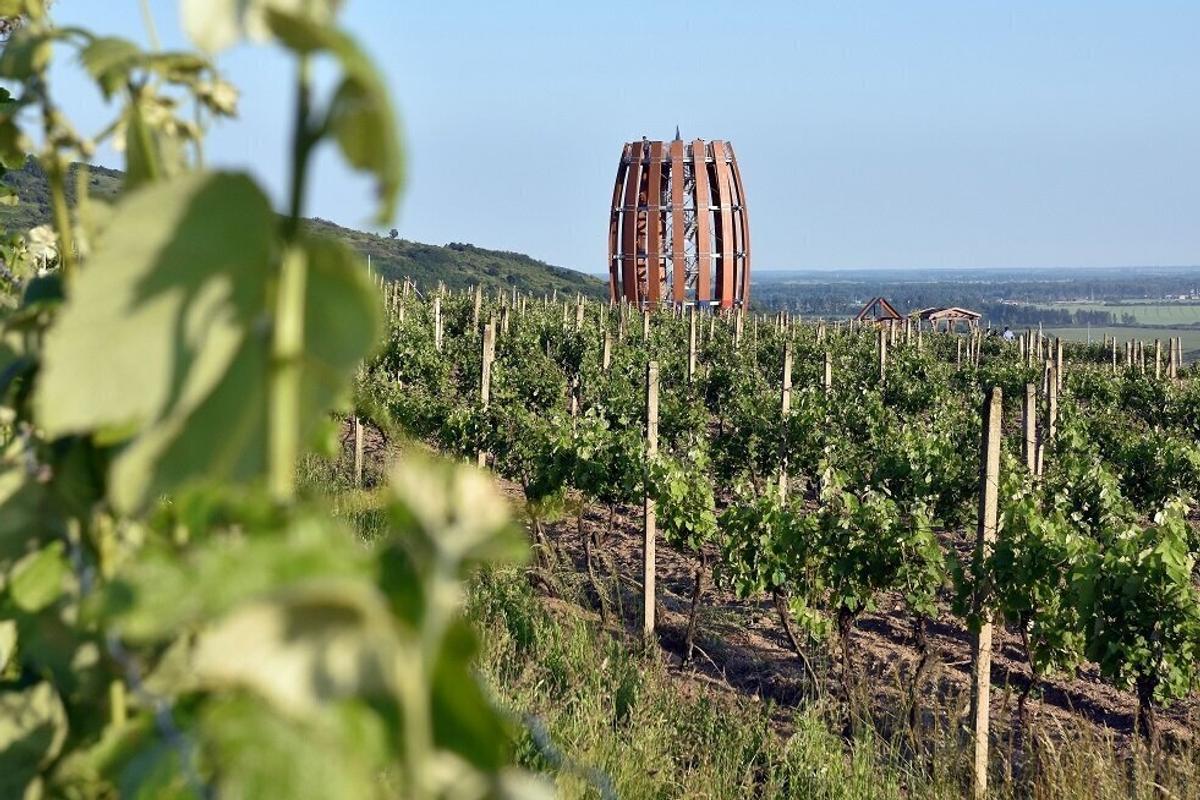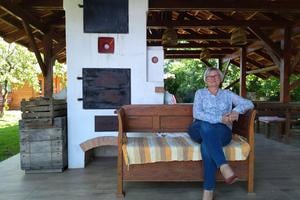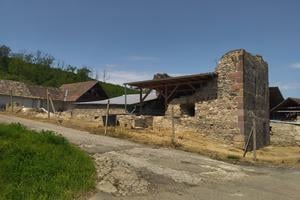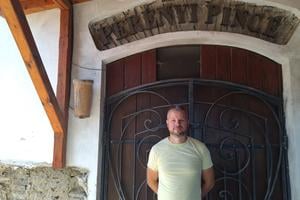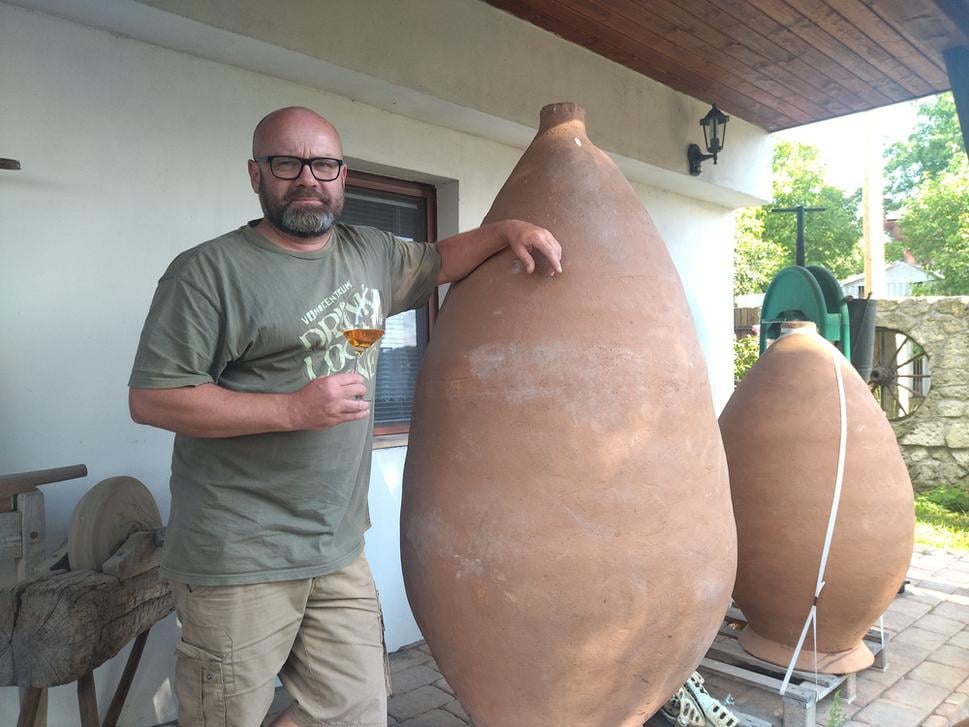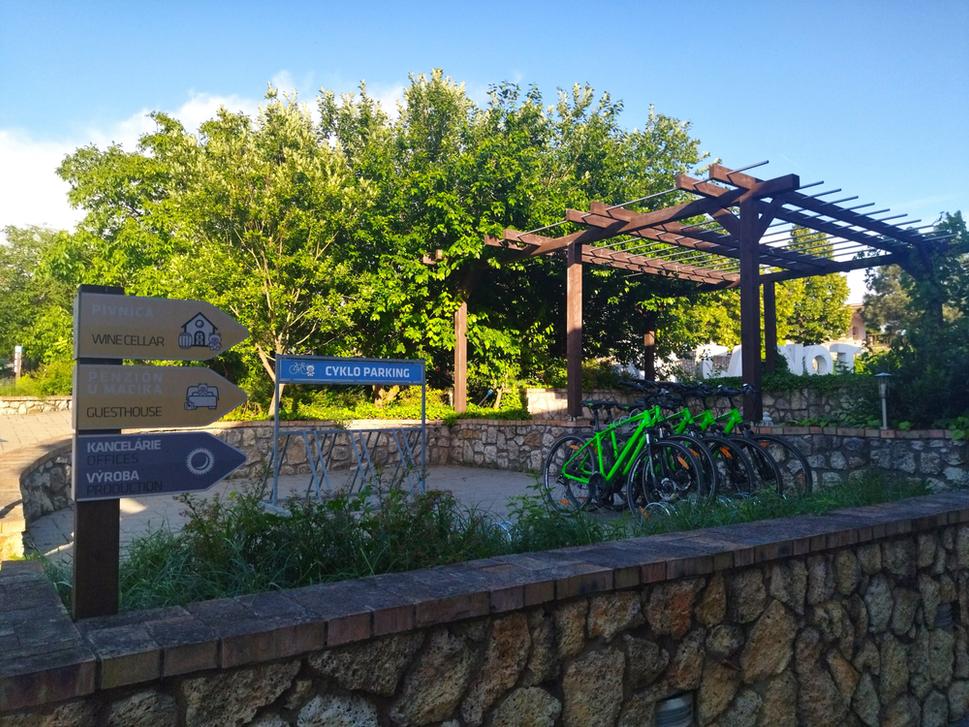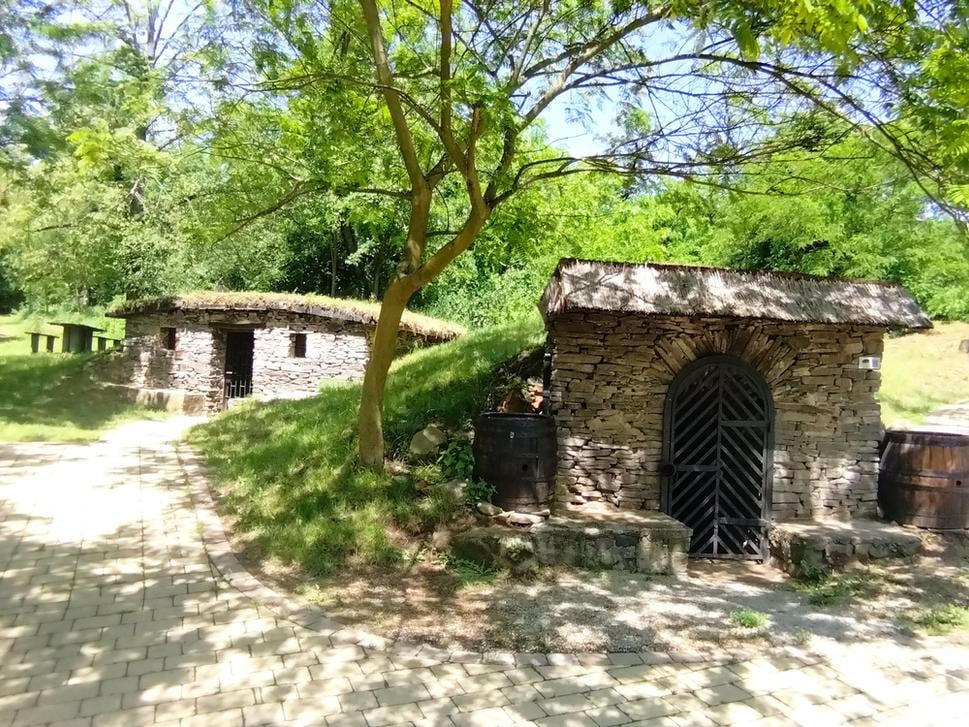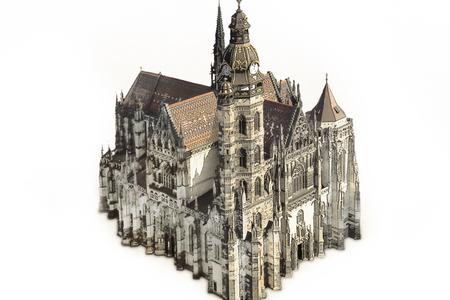You can read this exclusive content thanks to the FALATH & PARTNERS law firm, which assists American people with Slovak roots in obtaining Slovak citizenship and reconnecting them with the land of their ancestors.
A large white house outside the town of Veľaty, surrounded by a small forest, fields, and repaired first-class road, is more special than it seems at first glance. Not only does it have a pool with Croatian salt water, but it is also the gateway to Tokaj, a famous wine region on the border with Hungary.
That house, Aqua Maria, is a pension, as Europeans usually refer to small hotels. It belongs to the Rusňák family, who are proud of their long-running business that goes back to communist times. At first, Slavomír Rusňák's grandfather, Jozef, ran a motel here. At that time, it was owned by the Jednota cooperative. Later, Jozef’s son and Slavomír's father, Štefan, built a car camping site with 15 cabins in the area. Five years after the fall of communism in 1989, the family bought the motel from Jednota and turned the place into a gorgeous resort with somewhat tropical vibes.
Palm trees, a sandy beach, wellness, sea salt in the pool: the place seems to have it all - a perfect place from where visitors to the region can set out to explore Tokaj, which you can learn more about in the Košice Region travel guide.
"I initially considered using the Salty Well [a salt water spring, ed.] in the village of Veľaty to fill our pools, but it turned out to be not enough," Rusňák tells The Slovak Spectator.
That is why he decided to use sea salt from the Croatian island of Pag in the pools in the end.
Why tourism does not thrive more
The Aqua Maria, which can also host caravans, runs its own bike rental office to encourage visitors to discover Tokaj from the comfort of a bike saddle.
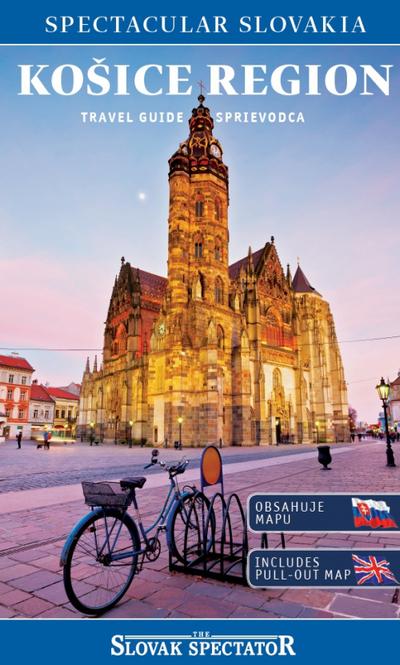
According to Rusňák, the development of tourism in the Tokaj region would benefit from a combination of attractions and cooperation between winemakers, guesthouse owners, and municipalities.
"I have no problem recommending a local winemaker to my guests, despite having my own wine cellar. But I'd expect them to direct guests to my wellness too," he says.
He believes that tourists need a diverse itinerary in Tokaj in order to stay for more than a weekend.
"We have things to offer to them even for a week, we just need to network," he notes.
In the future, he sees room for improvement, especially in enhancing the quality of and connection of cycle paths.
"I went to see Moravia [a region in the Czech Republic, ed.] by bike to get inspired. We have a lot to do to catch up with that region," the businessman thinks.
More and better cycle paths necessary
In the town of Veľká Tŕňa, three cars with bike racks are already parked outside a small guest house, owned by winemaker Matúš Vdovjak, on a hot May weekend. It is the afternoon, and cyclists sit on the terrace outside a renovated old farmhouse sipping wine.
Vdovjak's wife, Ivana, has placed various snacks to go with wine on the table and, finally, goulash. Vdovjak's father, Jozef, and his grandson bring dried herbs under the roof to protect it from the approaching storm.
Vdovjak, who produces natural wines, has a regular clientele. They return to him for wine, but also for the atmosphere and experience.
Historical names of towns and villages in the Trebišov District
Discover Eastern Slovakia with our Košice Guide.
Slovakia's territory has been part of different monarchies throughout history, including the Austro-Hungarian Empire from 1867 until 1918. Until 1992, with the exception of the inter-war years 1939-1945 during which the Nazi-aligned Slovak state existed, the territory was a part of Czechoslovakia. As a result of being a part of the Empire, the current names of Slovak municipalities are different than during that era.
Here's a list of the largest municipalities in Trebišov district with their historical names stated in the brackets:
Trebišov (Tőketerebes)
Čierna nad Tisou (Tiszacsernyő)
Kráľovský Chlmec (Király Helmec)
Leles (Lelesz)
Michaľany (Alsómihályi)
Parchovany (Parnó)
Sečovce (Gálszécs)
Streda nad Bodrogom (Bodrogszerdahely)
Vojčice (Vécse)
Zemplínska Teplica (Szécskeresztúr)
Other villages mentioned in the story:
Malé Trakany (Kistárkány)
Borša (Borsi)
Malý Horeš and Veľký Horeš (Kis and Nagygéres)
Malá Tŕňa and Veľká Tŕňa (Kis and Nagytoronya)
The full list of all Slovak municipalities, including their historical names, can be found at www.geni.sk (in Slovak only).
"Tomorrow, I'm going on a bike trip through the Tokaj vineyards with my guests. Maybe we'll go all the way to Hungary," the winemaker tells The Slovak Spectator.
In Hungary, there are high-quality asphalt cycle paths separated from the roads used by cars. In Slovakia, side roads connecting towns usually serve as cycle paths, as well as roads.
"Hungarians know better how to use European funds, which can also be seen on their cycle routes," thinks Vdovjak.
According to him, wine tourism could develop better in Tokaj provided the state does not burden winemakers, who just want to sell wine from their own cellars, with bureaucracy. Today, they cannot do it officially if they are not registered as winemakers.
He also sees potential in cycling. However, Vdovjak believes that the routes should be widened and extended as far as the town of Kráľovský Chlmec, or even as far as the Zemplínska Šírava reservoir.
"Our Tokaj region is small. A skilled cyclist can be done exploring it in one day, and then wants to explore the more distant surroundings," the winemaker opines.
Wine lovers replaced by cyclists
Penzión u Macika is a large and modern building with a spacious garden in Malá Tŕňa. A restaurant, bicycle racks, and wine cellars are part of this pension.
On a Friday evening in May, guests start to arrive.
Jaroslav Macik, the owner of the family winery, notes that the region has seen a rise in cycling tourists, especially after the coronavirus pandemic. Conversely, the corporate clientele in Tokaj has decreased since then.
"Firms no longer organise team-building events as often as before the pandemic, and we have noticed a drop in business clients," Macik explains.
He has also noticed another shift in the clientele, as wine aficionados who used to visit Tokaj have started to attend wine events and tastings closer to their places of residence.
"They have become used to winemakers coming to them rather than the other way around," Macik thinks.
Macik is pleased with the increase in cyclists visiting the area, but he emphasises that they can be demanding clients. They often expect local winemakers to be available for a wine tasting at any time. However, he says that winemakers spend most of their time working in the vineyards during the day, which is why it is not feasible for them to accommodate on-the-spot tastings for just a couple of cyclists. Winemakers prefer group tastings to be arranged in advance, Macik says.
In Tokaj, winemakers focus on working in the vineyards during the week and entertaining tourists during the weekends. Wine tastings with vineyard owners in their cellars are considered more authentic than with a hired sommelier.
According to Macik, they invest time in their visitors, offering more than just cheese with wine. They educate their guests and allow them to spend time with them in the vineyards, he describes. In his winery, tourists are drawn to wine caching, which is similar to geocaching. The twist is that people search for a hidden bottle of wine.
Macik says that local winemakers cooperate and recommend guests to each other if they cannot serve them. It does not matter whether someone is a small or large winemaker, he stresses.
"We have a strong player here, the Grand Bari winery, which has attracted new people to the region. I don't see them as competition," says Macik. "When people come to one winery, they also want to explore the other ones and spend money there as well."
Wine cellars in Malý Horeš are different
Malý Horeš is not part of the Slovak Tokaj region, which consists of seven villages, but grapes are still grown there. Almost everyone in the village is a winemaker, and there are about 380 unique wine cellars carved into tuff rock. These cellars are different from those in Tokaj because their entrances are lined with andesite rock.
After being revitalised and opened to the public almost two decades ago, the place began to attract more and more visitors. In the town, a Day of Open Cellars also takes place.
"We were inspired by the Hungarian Tokaj [region], then the Slovak Tokaj got inspired by us," recalls the mayor of Malý Horeš, Csaba Furik, explaining the beginning of the event.
The event, which started off with just a few winemakers and cellars, now features 20 winemakers who open their cellars to visitors. Buses bring visitors to the event. As their number grew, the village decided to convert a house into a small accommodation facility for tourists. However, it only has space for ten people, and Furik is considering expanding its capacity.
The mayor thinks that tourism in this region is growing, but he admits it still lags behind Hungary. For example, up to 100,000 people visit the nearby Füzér Castle in Hungary every year, whereas in the Slovak Medzibodrožie area, located between the rivers Ondava and Bodrog, visitors tend to stay for just a weekend.
He wanted a cellar, ended up buying a castle
After working as a manager in the IT industry in Prague for many years, Bartolomej Gönczy decided to return to his hometown, Kráľovský Chlmec. The coronavirus pandemic contributed to his decision. While continuing to work for a large IT company from home, he also ventured into winemaking and started purchasing vineyards around the town.
Later, he set out to search for a suitable wine cellar and space for a winery, eventually finding one in the neighbouring village of Veľký Horeš. He wanted it to be as big as possible to be able to accommodate a wine shop and a larger number of guests.
"Buying the castle was not my idea. A friend suggested a cellar under the local Csonkavár Castle. The cellar was for sale along with the castle ruins. In the end, I purchased both for €120,000," recalls the castle owner.
Over the course of seven years, he has been working on repairing the castle. In addition to the repairs, archaeological research was conducted in the area. It turned out that the castle was larger than the owner had originally thought.
On the day The Slovak Spectator talked to Gönczy, he was helping a mason restore a castle wall.
"That's why we are uncovering more walls, removing the rubble, and there is no time for a cellar and a winery yet," explains the owner of the castle in his work clothes.
He plans to uncover as much of the original Gothic castle as possible, demolish the later buildings around the ruins, and cover it with a roof. He has permission from conservationists to add one more floor to the castle. At the same time, Gönczy continues to explore potential uses for the castle and the cellar. For example, during the work on the castle, he discovered that the cellar serves as the ground floor of the castle, with temperatures only good enough for wine storage.
"There can be a wine shop with wine tastings, but not wine production and the cellar," he says.
With a budget of €940,000, Gönczy aims to complete the repairs within a year. He is currently looking for grants to fund the full restoration. Once restored, the castle could also attract cyclists coming to Kráľovský Chlmec, even though there are currently no cycling routes from Tokaj to this town.
At 69, she loves welcoming guests
A beach by the Tisa river is almost empty at the end of May, but it gets crowded in the summer with locals and tourists. There are no toilets, though there is at least a buffet. Another attraction in the area is a triple point where Slovakia, Ukraine and Hungary meet, attracting Czech motorcyclists, among others.
Zlatica Kondásová, a 69-year-old lady, offers private accommodation in the village of Malé Trakany, near the aforementioned sandy beach. Her house has two rooms for six people, but plans to add two apartments for eight people in another house. Her guest house accommodates business representatives, railway workers, and Czech tourists.
"When I started off this, no one believed that tourists would come here. Today, I am busy not only in the summer, but also during the winter," says Kondásová. She personally welcomes her guests, prepares breakfast and even dinner at times. There are not many restaurants within a 30-kilometre radius. "On Sundays, you won't even find any open restaurant in Kráľovský Chlmec," says the warm hostess.
Like winemakers, she sees the potential for tourism development in cycling along the Latorica river, but also rafting on the border river Tisa.
"Hungarians sail it despite the fact that it borders Ukraine, why we can't do it too," she asks.
Spectacular Slovakia travel guides
A helping hand in the heart of Europe thanks to the Slovakia travel guide with more than 1,000 photos and hundred of tourist spots.
Detailed travel guide to the Tatras introduces you to the whole region around the Tatra mountains, including attractions on the Polish side.
Lost in Bratislava? Impossible with our City Guide !
See some selected travel articles , podcasts , and traveller info as well as other guides dedicated to Nitra , Trenčín Region , Trnava Region and Žilina Region .


